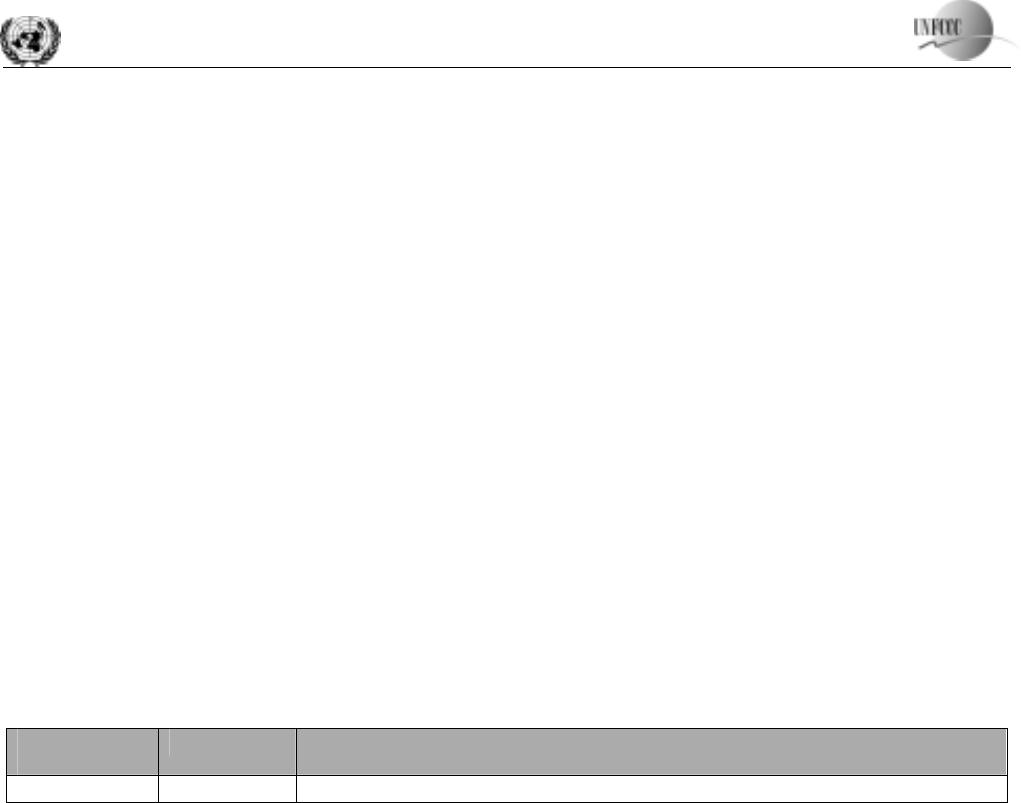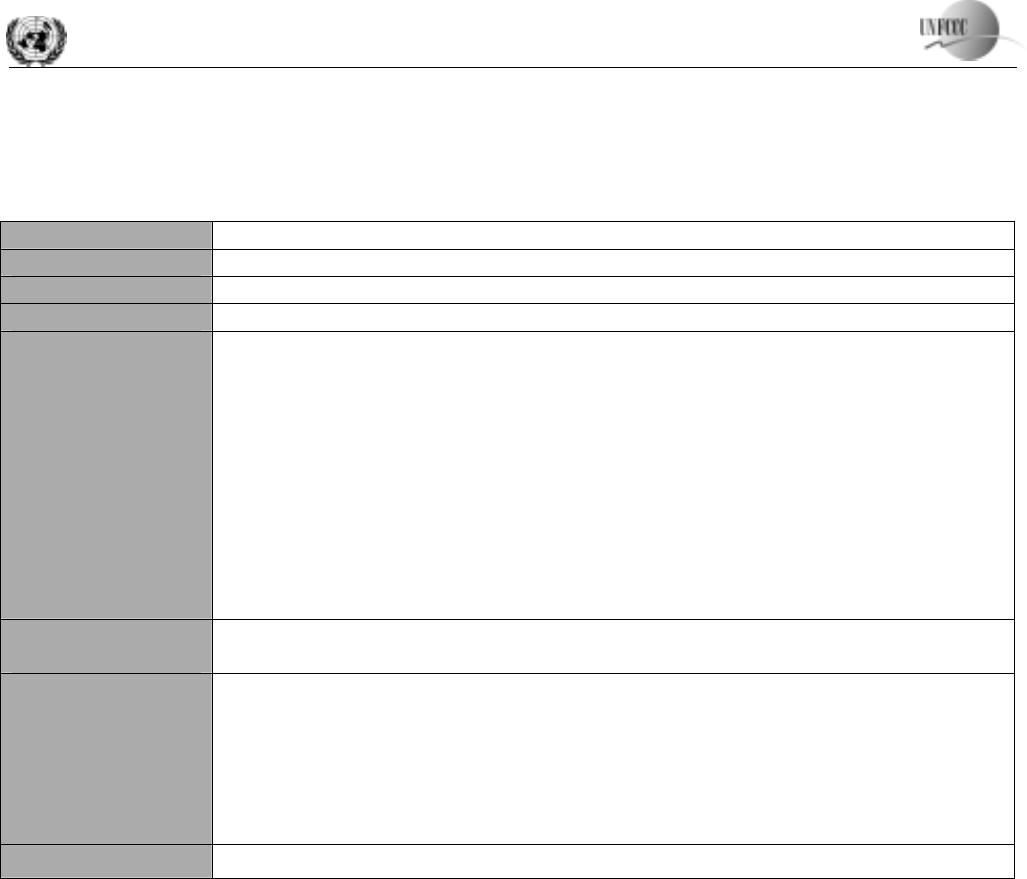
UNFCCC/CCNUCC
CDM – Executive Board EB 41
Report
Annex 11
Page 2
Option A: The CO2 emission coefficient COEFi,y is calculated based on the chemical composition of the
fossil fuel type i, using the following approach:
If FCi,j,y is measured in a mass unit: (2) 44/12wCOEF yi,C,yi, ×=
If FCi,j,y is measured in a volume unit: (3) 44/12wCOEF yi,yi,C,yi, ×ρ×=
Where:
COEFi,y = Is the CO2 emission coefficient of fuel type i (tCO2/mass or volume unit);
wC,i,y = Is the weighted average mass fraction of carbon in fuel type i in year y
(tC/mass unit of the fuel);
ρi,y = Is the weighted average density of fuel type i in year y (mass unit/volume unit
of the fuel)
i = Are the fuel types combusted in process j during the year y
Option B: The CO2 emission coefficient COEFi,y is calculated based on net calorific value and CO2
emission factor of the fuel type i, as follows:
yi,CO2,yi,yi, EFNCVCOEF ×= (4)
Where:
COEFi,y = Is the CO2 emission coefficient of fuel type i in year y (tCO2/mass or volume
unit)
NCVi,y = Is the weighted average net calorific value of the fuel type i in year y
(GJ/mass or volume unit)
EFCO2,i,y = Is the weighted average CO2 emission factor of fuel type i in year y (tCO2/GJ)
i = Are the fuel types combusted in process j during the year y
Option A should be the preferred approach, if the necessary data is available.
III. MONITORING METHODOLOGY PROCEDURE
Monitoring procedures
Describe and specify in the CDM-PDD all monitoring procedures, including the type of measurement
instrumentation used, the responsibilities for monitoring and QA/QC procedures that will be applied. Where
the methodology provides different options (e.g. use of default values or on-site measurements), specify
which option will be used. Meters should be installed, maintained and calibrated according to equipment
manufacturer instructions and be in line with national standards, or, if these are not available, international
standards (e.g. IEC, ISO).
All data collected as part of monitoring should be archived electronically and be kept at least for 2 years
after the end of the last crediting period. 100% of the data should be monitored if not indicated differently in
the comments in the tables below.



 VIP
VIP VIP
VIP VIP
VIP VIP
VIP VIP
VIP VIP
VIP VIP
VIP VIP
VIP VIP
VIP VIP
VIP